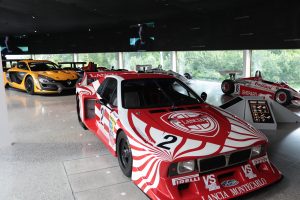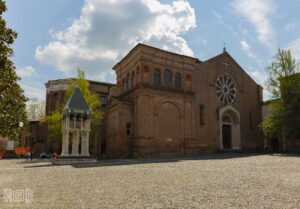The center of Bologna holds some of the most important buildings in the city. Ancient buildings that have now become an integral part of Bologna’s architecture.
Come discover with us the most important historic buildings in the center of Bologna!
Palazzo Fantuzzi
Palazzo Fantuzzi,, built in the Renaissance style, is located in Bologna at Via San Vitale 23.
It was built in 1521 by Senator Francesco Fantuzzi, but it was not until 1535 that Fantuzzi was allowed to raise the Roman-style facade without a portico, having the existing one demolished. Even today, the palace is one of the few palaces in Bologna without a portico.
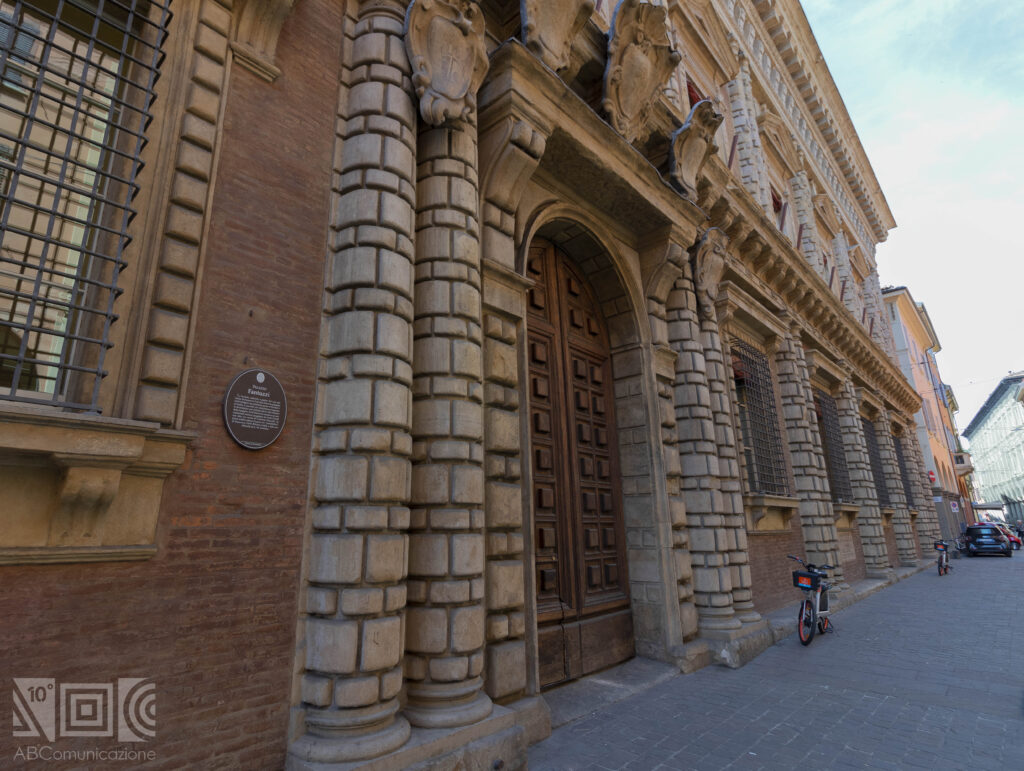
The palace is nicknamed “palace of the elephants” because on the facade can be seen two elephants carrying on their rump a castle with three towers, the coat of arms of the family, who lived there until 1779. The Fantuzzi family, originally from Treviso, declared that its surname was originally Ele-fantuzzi: hence the choice of the elephant as the family symbol.
A monumental staircase decorated with marble statues is also preserved inside the palace.
If you want to know why Palazzo Fantuzzi does not have porticoes, I recommend you read the article The porticoes of Bologna: a UNESCO World Heritage
Casa Isolani and the “Three Arrows” portico
Casa Isolani is a rare and very old building from the 1200s and is located at Strada Maggiore 19. It stands on three floors, the last of which rests on a portico of brick pillars and ancient oak beams. Casa Isolani is an important testimony to Romanesque-Gothic architecture.
The portico on the street connects Casa isolani to Palazzo Isolani on Piazza Santo Stefano. The portico is also called the “three arrows,” because under the wooden portico one can see three arrows stuck in the ceiling. There are several legends that tell the story of these arrows.
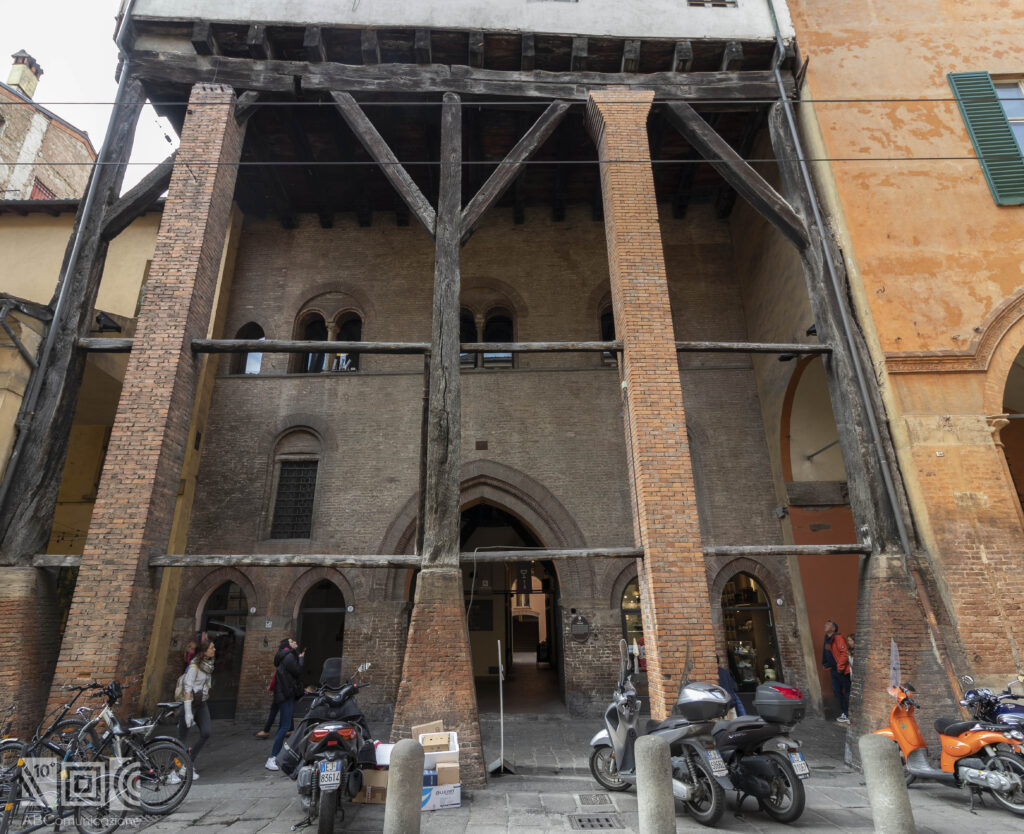
Are you curious about the legends of the three arrows? Hurry up and read our article, A Journey Through the Seven Secrets of Bologna
Casa Isolani Today
Casa Isolani today is a 5-star B&B located between Santo Stefano and Piazza Maggiore, immersed in the city’s Renaissance history.
A short distance away you can admire some of Bologna’s most important monuments.
To discover them, I recommend you read our article, Five Things not to be Missed in Bologna
Palazzo Pepoli Campogrande
Palazzo Pepoli Campogrande is located at Via Castiglione 7. The palace is known as the “new” Pepoli Palace to distinguish it from the old 14th-century palace. Palazzo Pepoli Campogrande was built at the behest of Count Odoardo Pepoli in 1653. From 1683, his nephew Ercole continued the work, which, even after his death, continued thanks to Alessandro Pepoli.
The new palace was built with the idea of giving social prestige to the Pepoli family, which was known for its cloth trade and banking activities. Indeed, the mansion is presented as a stately and opulent residence.
Upon entering, one is greeted by a monumental staircase leading to the noble hall, with sumptuous, frescoed rooms.
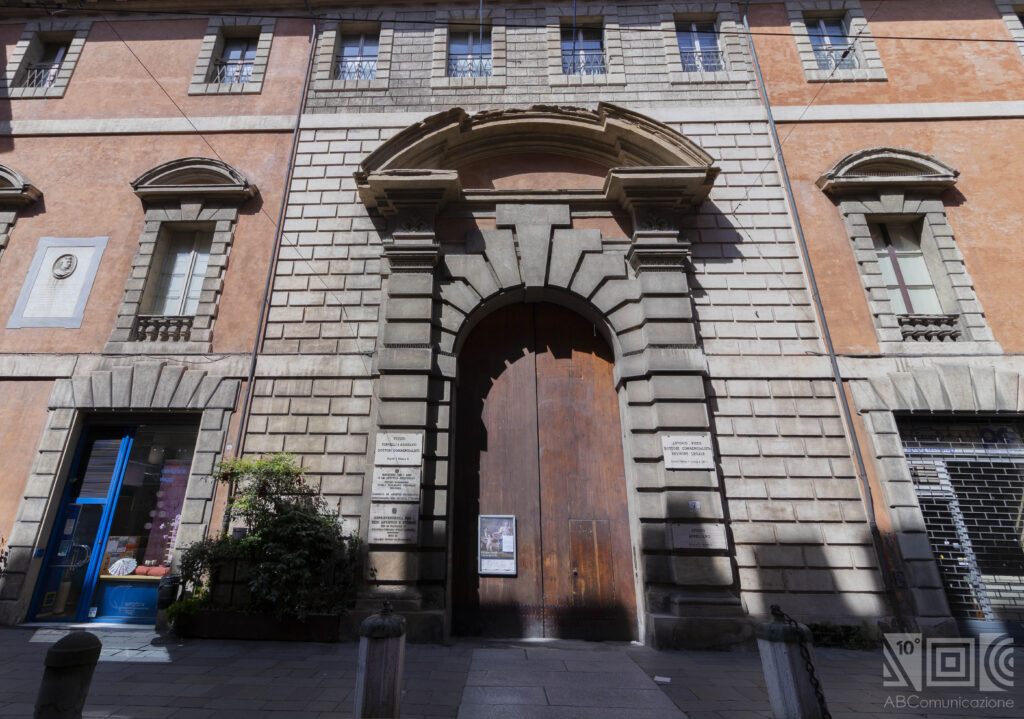
The hall on the main floor displays part of the Zambeccari picture gallery, one of the most important painting collections in the city, perfectly preserved. The collection features 300 paintings from the Emilian school, as well as works from other Italian regions, and has been part of the Pinacoteca’s collections since 1884.
If you are passionate about artistic works, you can go to the Pinacoteca Nazionale di Bologna, which features a collection of nearly 1,000 paintings made by churches and convents between the late 18th and early 19th centuries. To learn more, go read our article: Museums in Bologna: a must-see heritage.
Visiting Palazzo Pepoli Campogrande
Palazzo Pepoli Campogrande is open on Wednesdays and Saturdays from 9 a.m. to 7 p.m.
The ticket to visit includes the Pepoli Campogrande Palace and admission to the National Picture Gallery of Bologna. Ticket prices are:
- Full: € 8.00
- Reduced conventioned: € 5.00
- Reduced youth from 18 to 25 years old: € 2.00
Palazzo Malvasia
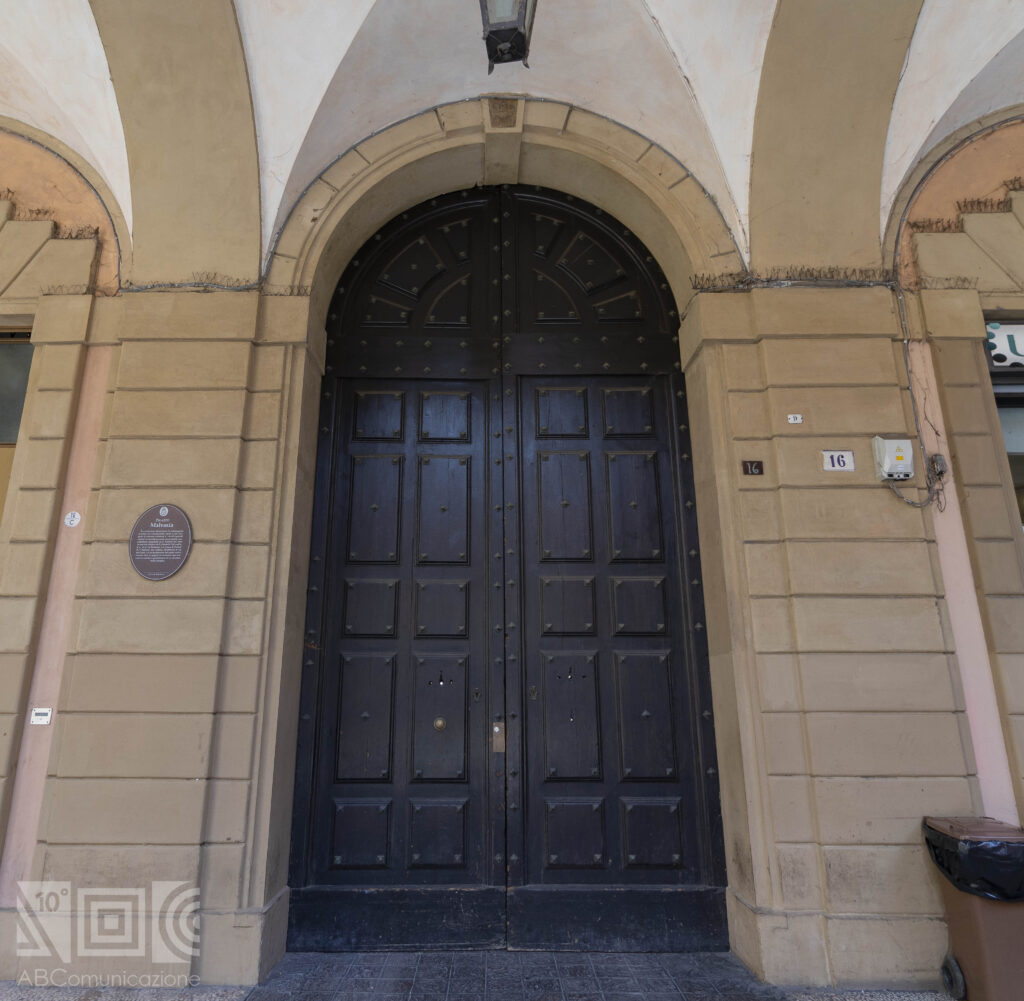
Palazzo Malvasia is located at Via Zamboni 14. The building overlooks an unnamed small square and the facade is neoclassical in style.
In the 1500s, merchant Francesco Pannolini had the palace built and then sold it in 1700 to the Malvasia family. In the small square is the portico of the Malvezzi-De’ Medici palace and, on the left, the church of San Donato.
A special feature of the palace is the large stone balcony with a huge window that can be seen in the exterior facade. Under the balcony is an anthropomorphic mask with a gaping mouth, also called “the wine fountain.” The building is so named because it was the custom of the Malvasia family to let wine flow out of the mouth of the mask as if it were a fountain to celebrate on special occasions.
The face also represents the beginning of the Jewish quarter and connects the church of San Donato to the former Manzoli then Malvasia palace.
Today, part of the Malvasia palace belongs to the municipality of Bologna and houses the Jewish museum.
An experience not to be missed in Bologna is the discovery of its ancient Jewish ghetto. Read more in our article: A Trip to the Ancient Jewish Ghetto of Bologna
Palazzo Caprara
Palazzo Caprara is located on Via IV Novembre. The palace was commissioned by notary Francesco Caprara, known as Terribilia. It was finished in 1603, and a century later, underwent further alterations at the behest of Vittoria Caprara. In 1805 it hosted Napoleon Bonaparte, who bought the palace in the following year.
Later, it came to Prince Antonio d’Orléans Duke of Montpensier, also known as Duke of Galliera. The palace was thus also recognized as the Palace of Galliera.
During the Belle Époque period it became one of the most sought-after places of social life.
Since the Unification of Italy it has been for public use: in fact, it is the seat of the Bologna Prefecture. The palace traces the political history of the city and its illustrious lords in power.
Inside, the palace has been richly and sumptuously decorated. It consists of about two hundred rooms, including salons and minor rooms, accessed by an 18th-century grand staircase. Among the decorators was Ludovico Carracci, whose “Allegory of the Fortress” remains on the ground floor. The main floor, on the other hand, contained a number of tempera paintings by Pietro Paltrinieri known as the Mirandolese, Vittorio Maria Bigari and Bernardo Minozzi: many of them were unfortunately destroyed during the bombings of World War II.
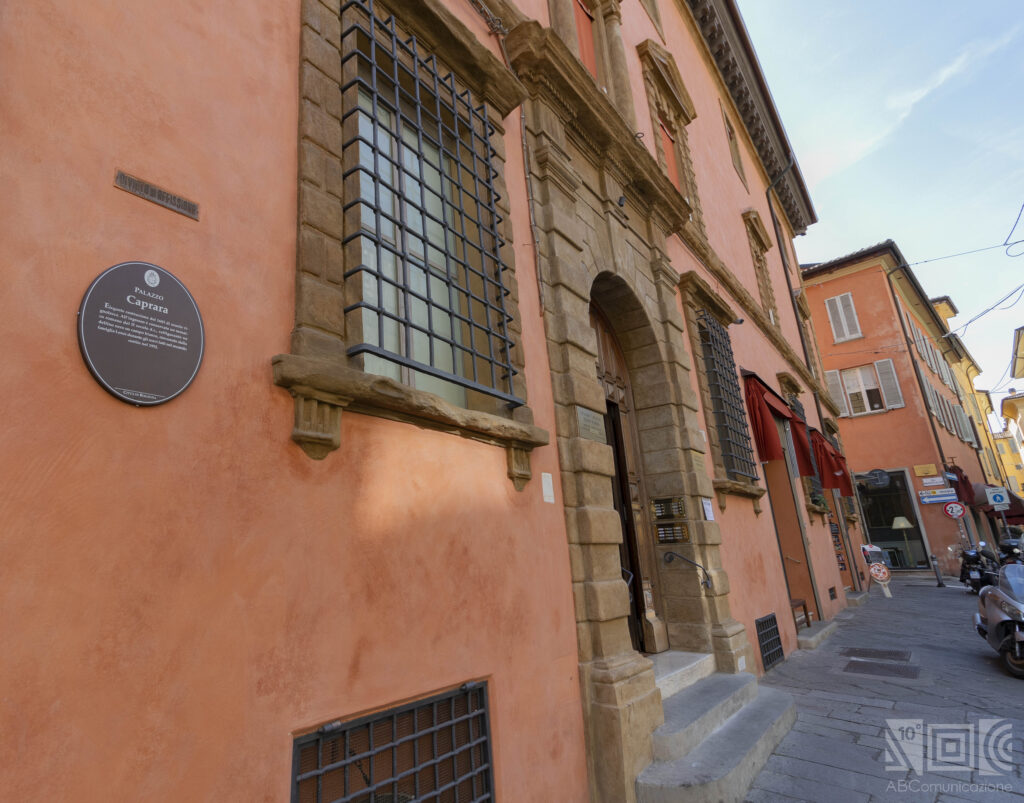
Visiting Palazzo Caprara
It is possible to take a guided tour of the palace.Tours are given on Saturdays, Sundays, and holidays with about 6 shifts per day, three in the morning and three in the afternoon.
Ticket prices are:
- Full: 15 euros
- Reduced: 12 euros (children 4-11 years old; over 65; university students; accompanying disabled person).
- Free: children 0-3 years old; disabled persons.
- Reduced Card: € 10.00 p/person (Culture Card and BW Card holders).
Bibliography:
- Giampiero Cuppini. L’architettura senatoria a Bologna. Edizione 2004
- Pietro Maria Alemagna. Il tesoro nascosto dei palazzi di Bologna dal ‘500’ al ‘800’. Edizione 2020. Editore Pendragon.
- Maria Silvia Avanzato. Guida ai palazzi di Bologna. Viaggio romantico tra gli edifici. Edizione 2020, editore della sera



